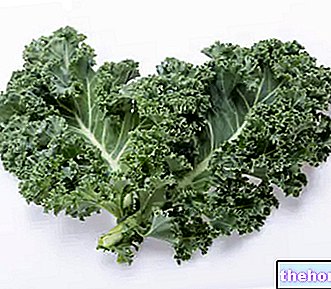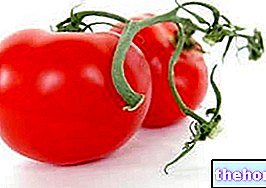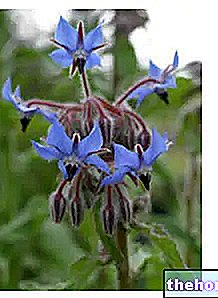What are capers
THE capers, intended as a widely consumed food, are the buds of Capparis spinosa, a small woody shrub typical of the Mediterranean basin.
The caper plant, native to Asia Minor and Greece, loves calcareous, steep and dry soils.

To be precise, that of the caper is not a tree, but a shrub. Its aerial fraction (consisting of falling or creeping branches) often makes it not very visible, as it does not reach significant heights.It is not uncommon for the caper plant to grow between the cracks in the walls, between the cracks in the rock or between the masses of stones.
As we have said, capers are NOT fruits, but flowers (or rather buds, therefore flowers still open). This means that, from the moment the plant shows itself well "in bloom", most of the edible portion is no longer available.
The caper (bud) is small in size (variable between 0.5-1.5cm in length), green color often variegated in reddish and slightly pointed spherical shape in the vertex opposite the petiole.
ATTENTION. It is necessary to distinguish the caper proper (bud) from the edible fruit (cucuncio). This one, of ellipsoidal section, therefore of elongated shape, is (roughly) of the same color but larger in size (≥2.0cm).
Nutritional Characteristics
Capers have a very low energy value, mainly provided by complex carbohydrates. Lipids are almost absent (but mainly unsaturated) and proteins (with a low biological value) are not significant.
There is a significant fiber content, while cholesterol is absent.

Nutritional values (per 100 g of edible portion)
As far as vitamins are concerned, the equivalent concentrations of retinol (vitamin A), alpha-tocopherol (vitamin E), ascorbic acid (vitamin C) and folate (not visible in the table) are distinguished, but none of these in quantity very high.
From the salt point of view, the preponderant element of capers preserved in salt is sodium, the excess of which is harmful to the health of hypertensive people; just think that in 20 grams of salted capers there is the same quantity of sodium contained in 150 liters of mineral water.
There is no shortage of good doses of manganese, iron, magnesium and copper (some not visible in the table).
Herbal Properties
In the herbal field, by mouth, the rind is mainly used for the caper; it contains capparirutin (a glucoside amaro) with diuretic and anti-arthritic properties.
The bark and root of the plant (but also the leaves, albeit less used) are very rich in quercetin, a flavonoid with a strong antioxidant and protective function of blood vessels; the most common application is for topical use.
Gastronomic Applications
Capers have a strong and penetrating flavor; they are collected and preserved in oil, vinegar or salt. In cooking, they are used to flavor other foods such as first courses, main courses, sauces and condiments.
The best capers are those preserved in coarse sea salt; this method of preservation guarantees the maintenance of the organoleptic characteristics without resorting to additives added to pickled products.
Capers are also marketed in different sizes; the smaller ones are considered more valuable and can be eaten whole. The larger capers, on the other hand, are more tender and can be used minced to embellish sauces and fillings.
By virtue of the considerable diffusion and assiduous use in Sicilian gastronomy, capers have been included among the Italian Traditional Agri-food Dishes (PAT) of the Sicily region.
Extremely delicious and known all over the world are the capers of Pantelleria (produced in the island of the same name) which, in 1996, obtained the certification of Protected Geographical Indication (PGI). The typical geographical location, the humidity and the soil of origin volcanic give the capers of Pantelleria a characteristic aroma that distinguishes them from other products in the rest of the world.
The fruits of the caper are used in a similar way to the buds or, for lovers, deprived of the stalk and as a side dish. To those who approach the consumption of cucunci for the first time, I suggest to carry out an additional processing, that is to engrave them longitudinally and empty them of the seeds; these, particularly numerous, can sometimes be unpleasant during chewing.
The commercially available capers can be salted, in oil or in vinegar. Qualitatively speaking, the best are those in salt even if, due to the excess of sodium, at the time of purchase they are often discarded for the benefit of others. What many ignore is that the excessive salt content can still be remedied by rinsing the capers thoroughly and placing them in a cold water bath for about ten minutes; It is also a good rule not to add salt to dishes when they are enriched with capers.
Video recipes with capers
Hints of Cultivation
The caper is a fairly simple plant to maintain; it can be grown by sowing (not very productive) or by grounding the cuttings (at least 2-3 years of age). Obviously, it is not possible to ignore a "Mediterranean" climate and the flowering seems satisfactory with a "scarce or medium-sized irrigation. The collection of these small, intense green buds takes place between the end of May and the beginning of September ( according to the areas), just before their flowering.
Other Foods - Vegetables Garlic Agretti Asparagus Basil Beets Borage Broccoli Capers Artichokes Carrots Catalonia Brussels sprouts Cauliflower Cabbage and Savoy cabbage Red cabbage Cucumber Chicory Turnip greens Onion Sauerkraut Watercress Edamame Chives Chanterelles Flour Cassava Flowers Pumpkin Flour Edible Flowers Pumpkin Seasonal Fruits and Vegetables Endive Salads and Salads Strengthening Salad Lettuce Aubergines Vegetables Nettle Pak-Choi Parsnip Potatoes American Potato Peppers Pinzimonio Tomatoes Leeks Parsley Radicchio Turnips Red Turnips Radishes Rocket Shallots Endive Celery Celeriac Seeds Sprouted Spinach Truffle Valianamberi or Jerusalem artichoke laxatives Saffron Pumpkin Zucchini Vegetables - Nutritional properties OTHER VEGETABLE ITEMS Categories Food Alcoholics Meat Cereals and derivatives Sweeteners Sweets Offal Fruit Dried fruit Milk and derivatives Legumes Oils and fats Fish and fishery products Cold cuts S pezie Vegetables Health recipes Appetizers Bread, Pizza and Brioche First courses Second courses Vegetables and Salads Sweets and Desserts Ice creams and sorbets Syrups, liqueurs and grappa Basic preparations ---- In the kitchen with leftovers Carnival recipes Christmas recipes Light diet recipes Women's Day, Mum, Dad Recipes Functional Recipes International Recipes Easter Recipes Recipes for Celiacs Recipes for Diabetics Recipes for Holidays Recipes for Valentine's Day Recipes for Vegetarians Protein Recipes Regional Recipes Vegan Recipes




























